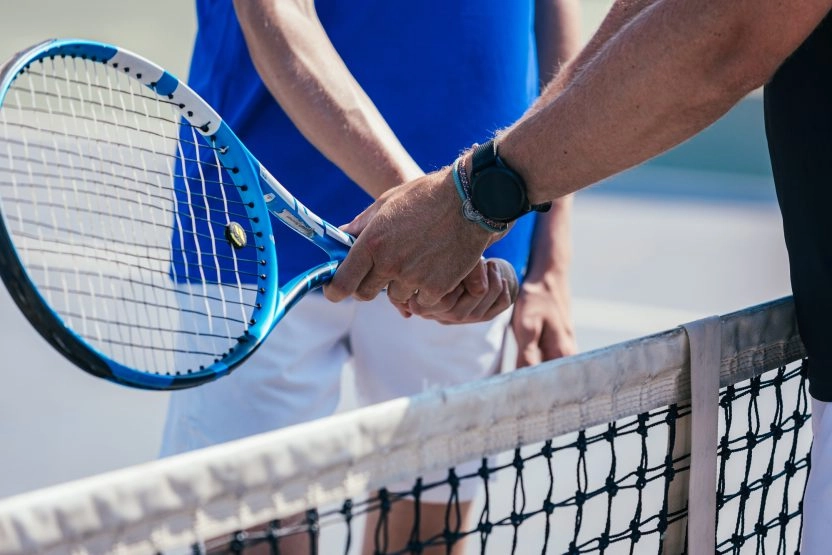
Do you prefer a one-handed backhand?
This grip can be used when executing a one-handed backhand to make a flat (dry) shot along the line and to start producing some lifted spin to make your opponent play over the shoulder.

The hammer grip is a specific hand position on a specific part of the handle of a tennis racket. It can be used by players at all levels, from beginners through to advanced players and competitors. It provides manoeuvrability and precision in both small and large games. The hammer grip is used as a reference for certain tennis shots and is highly versatile. Take part in an intensive tennis course or tennis study programme at the Mouratoglou Academy to work on your racket grip.

Place the racket standing upright on the floor, on the edge of its frame. This helps you better feel how to hold it.
The handle has 8 sides: 4 flat and 4 beveled edges.
To make the hammer grip (like holding a hammer), place your hand naturally around the handle. This grip is simple and effective, especially for serves and volleys.
To hold a racket properly, it all starts with the position of your hand on the handle.
An important point to locate: the base of the little finger, where the palm is slightly raised (this is called the hypothenar).
This spot helps you find the right grip, especially the hammer grip.
To find it:
If it’s tricky, place the racket on the floor on its edge and grab it naturally.
With practice, you’ll get used to this grip.
Where would you like to go?
France
Mouratoglou Academy, Biot, French Riviera, France

NORTH AMERICA
LATIN AMERICA
EUROPE
ASIA
MIDDLE-EAST & AFRICA
Who would you like to contact?
FRANCE
Mouratoglou Academy, Biot, French Riviera, FRANCE

NORTH AMERICA
LATIN AMERICA
EUROPE
ASIA
MIDDLE EAST & AFRICA